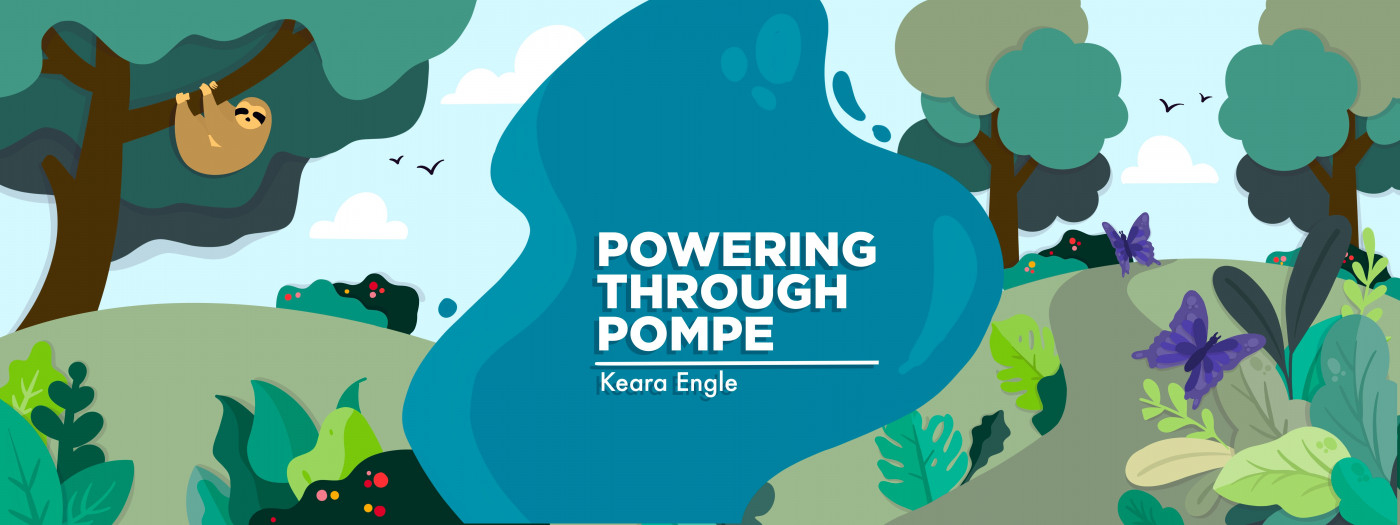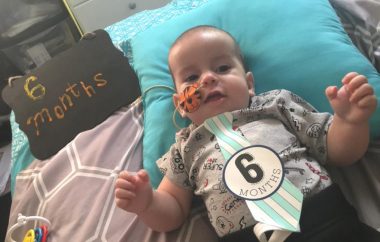My Son Is Finally Showing an Interest in Eating
While Keara Engle's son is G-tube feeding, he's shown an interest in solid foods

From the time he was born four years ago until now, my son, Cayden, has struggled with eating orally. Because of his infantile-onset Pompe disease, Cayden has weak muscles all over his body, including his mouth and the muscles involved in swallowing. He can’t swallow properly and often would end up silently aspirating, which can lead to pneumonia. This is a common symptom in children with the infantile-onset form of Pompe disease.
Cayden has had a feeding tube his entire life. He used to have a nasogastric tube (NG tube) when he was younger. This thin, flexible tube goes into a person’s nose, down the throat, and into the stomach. He had this type of tube until he was about 6 months old. At that time, we decided something more permanent would be better, since a feeding tube would be a long-term thing for him.

Cayden with his NG tube at 6 months old. (Photo by Keara Engle)
Shortly after he turned 6 months old, Cayden had surgery for a gastrostomy tube (G-tube). This tube can only be inserted surgically and is placed through the abdominal wall into the stomach. The surgeon makes a small hole in the abdomen and pops the tube right in. It provides direct access to the stomach and is typically used only in long-term situations.
Cayden receives all of his medications and nutrition through his G-tube. He gets real food just like us, but it has to be blended first and then pushed through his tube. I’m thankful this is an option for us, but in these past few months, he has shown a real interest in eating orally. For now, he is only getting small licks or a taste, but it’s a start nonetheless.
Anytime Cayden sees me or someone else in our family eating, he is eager to have a taste himself. He enjoys things like soups, pizza, pasta sauces, salty french fries, chips, ice cream, and his all-time favorite, lollipops. Anything that is solid he just licks, but he does take small bites of liquid things.
Making progress
Although these small bites and licks don’t really equate to anything nutritionally, it means a lot to me to watch my son enjoy them. I never knew if I’d see the day when he was eager to try food, but now it’s as if he can’t get enough. He used to be scared to try anything, but not anymore!
I’m eager to talk to some of his specialists to see if we can schedule a swallow study for him. This would take X-rays while he swallows to see if he’s still aspirating or if the foods are going down correctly. I assume he’s no longer aspirating because he hasn’t had pneumonia for some time. But you can never be sure, so I’m interested in finding out what’s going on now.
While I’m not looking to get rid of his G-tube anytime soon, it would be neat if that could happen in the future. It has been amazing for us over the years. However, it would be great if we could work on oral eating even more (as long as it’s safe for him to do so) and potentially get rid of the tube.
For now, I will continue to use his tube while I watch him enjoy this new interest in oral eating.
Note: Pompe Disease News is strictly a news and information website about the disease. It does not provide medical advice, diagnosis, or treatment. This content is not intended to be a substitute for professional medical advice, diagnosis, or treatment. Always seek the advice of your physician or other qualified health provider with any questions you may have regarding a medical condition. Never disregard professional medical advice or delay in seeking it because of something you have read on this website. The opinions expressed in this column are not those of Pompe Disease News or its parent company, BioNews, and are intended to spark discussion about issues pertaining to Pompe disease.







Comments